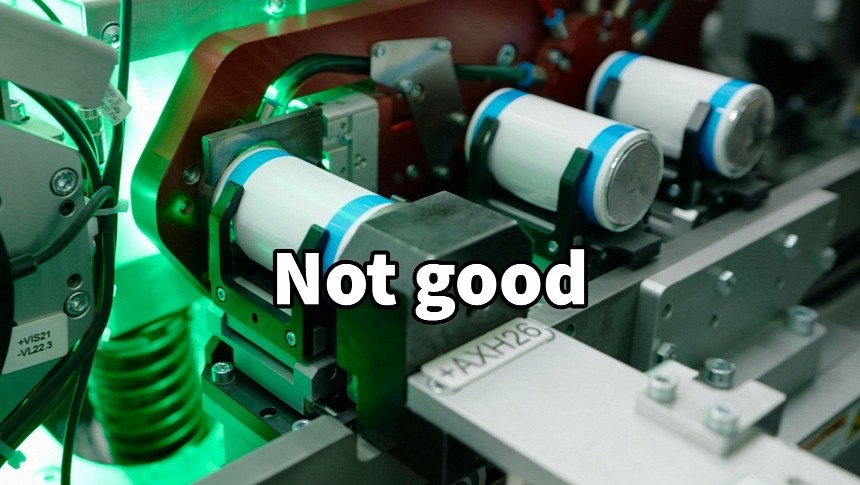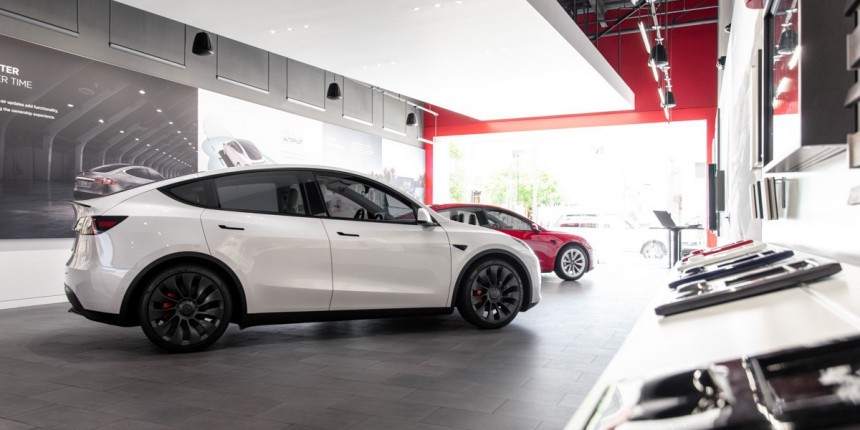Tesla was proud to have the shortest mineral-to-car chain in the car industry, with most of the suppliers located in close proximity to its gigafactories. In 2023, this phenomenal efficiency took a hit when the EV maker decided to export Giga Shanghai production to Canada. While the decision was right, it shows that betting everything on the 4680 battery cells was not the wisest move.
Tesla had a very distinct business model from legacy carmakers, which helped it boost efficiency to the point that it's the only company making profits on electric vehicles. By selling directly to consumers and not paying for advertising, Tesla already saves tons of money. Besides that, it has a very short supply chain, with the highest level of vertical integration in the automotive industry. Ultimately, Tesla aimed to sell the bulk of its production locally, and that's why it built gigafactories in its most important markets.
This started to change in the past months, as Tesla seems forced to abandon many of these tactics to gain just one thing: volumes. Volumes matter to Elon Musk now, and to achieve this goal, everything else can be sacrificed. Price cuts from the beginning of the year directly affected margins, but more things are eating into Tesla's profits. Even worse, this trend is accelerating, as Tesla announced it wants to outsource more parts production for upcoming models such as Project Highland and the next-gen compact EV.
To make things worse, Tesla is now juggling car production between different markets, which blocks a significant percentage of its output on cargo ships traveling across the globe in all directions. Tesla exports cars produced at Giga Berlin to Taiwan and, at the same time, sells made-in-China EVs in Europe. Recently, it started exporting more cars from Giga Shanghai, including to North America, although Tesla already has two production facilities in the region. This is far from optimal, both for the company and the environment.
The first made-in-China EVs to land in Canada were the Model 3 RWD and Long Range variants, along with the Model Y Performance. Now, the Model Y Long Range is also supplied from Giga Shanghai. If you're curious to see which cars come from China, it's enough to search inventory, click on Details for each vehicle, and look at the URL, which includes part of the VIN. LRW in the URL means the car is produced in China, while 5YJ and 7SA indicate a US-built model.
Many people wonder why Tesla is doing this, pointing to several reasons. Some think that demand in China has waned, and Tesla needs to offload production to other markets. We already know that Tesla's production capacity exceeds current production levels, and Tesla chose to reduce output at Giga Shanghai and Fremont while ramping up Giga Austin and Giga Berlin. Still, there may be other reasons why Tesla would want to supply the Canadian market from China.
One could be that Tesla wants North American production reserved for the US market to benefit from the IRA incentives. Still, this shouldn't be a problem unless Giga Texas has trouble increasing production. The latter might be the leading cause, especially as Tesla's bet on 4680 cell production didn't pan out. The 4680-cell output is still very limited, while people who bought a 4680 Model Y produced at Giga Texas complained about inferior performance caused by the immature cells. For instance, the charging speed is slower than the corresponding 2170 cells.
This shows that 4680 cells are still far from being production-ready, and it's the main cause of the slower production ramp at Giga Texas. Worse, Tesla was so confident in the new technology that it didn't think of a backup solution, such as building a 2170-cell production facility at Giga Texas. This mistake already costs Tesla a lot of money and will likely impact Cybertruck production in the short term. Switching to 2170 cells this late in the game will not be easy.
This started to change in the past months, as Tesla seems forced to abandon many of these tactics to gain just one thing: volumes. Volumes matter to Elon Musk now, and to achieve this goal, everything else can be sacrificed. Price cuts from the beginning of the year directly affected margins, but more things are eating into Tesla's profits. Even worse, this trend is accelerating, as Tesla announced it wants to outsource more parts production for upcoming models such as Project Highland and the next-gen compact EV.
To make things worse, Tesla is now juggling car production between different markets, which blocks a significant percentage of its output on cargo ships traveling across the globe in all directions. Tesla exports cars produced at Giga Berlin to Taiwan and, at the same time, sells made-in-China EVs in Europe. Recently, it started exporting more cars from Giga Shanghai, including to North America, although Tesla already has two production facilities in the region. This is far from optimal, both for the company and the environment.
The first made-in-China EVs to land in Canada were the Model 3 RWD and Long Range variants, along with the Model Y Performance. Now, the Model Y Long Range is also supplied from Giga Shanghai. If you're curious to see which cars come from China, it's enough to search inventory, click on Details for each vehicle, and look at the URL, which includes part of the VIN. LRW in the URL means the car is produced in China, while 5YJ and 7SA indicate a US-built model.
One could be that Tesla wants North American production reserved for the US market to benefit from the IRA incentives. Still, this shouldn't be a problem unless Giga Texas has trouble increasing production. The latter might be the leading cause, especially as Tesla's bet on 4680 cell production didn't pan out. The 4680-cell output is still very limited, while people who bought a 4680 Model Y produced at Giga Texas complained about inferior performance caused by the immature cells. For instance, the charging speed is slower than the corresponding 2170 cells.
This shows that 4680 cells are still far from being production-ready, and it's the main cause of the slower production ramp at Giga Texas. Worse, Tesla was so confident in the new technology that it didn't think of a backup solution, such as building a 2170-cell production facility at Giga Texas. This mistake already costs Tesla a lot of money and will likely impact Cybertruck production in the short term. Switching to 2170 cells this late in the game will not be easy.









